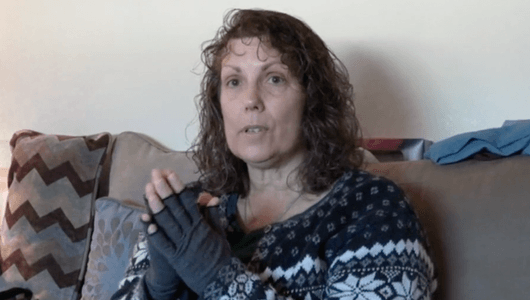The Real Impact of IH
The Idiopathic Hypersomnia (IH) struggle begins upon awakening
Jump to:
Across studies, 36% to 66% of patients with IH reported sleep inertia1
- A severe inability to wake up in the morning
- Caught between sleep and wake states
- Lasting minutes up to several hours
- Feeling confused, uncoordinated, or even aggressive
- Suffering from impaired performance and reduced vigilance
“I stopped pursuing my degree. I tell people it's because of money, but really it's because of my brain fog.”—Patient living with IH
The IH struggle continues throughout the day AND NIGHT1,4
How IH may impact other aspects of patients' lives
IH is associated with functional impairments and impact on many aspects of life—including severe limitations on school, work, and personal relationships.5
In a study of 54 patients receiving
treatment for IH5*
- 35%Do not feel they receive support from friends or family
- 26%Had been dismissed from their jobs or forced to relocate due to their symptoms
- 21%Do not feel they have autonomy over their work schedule
- 13%Had divorced or broken up with a partner because of their conditions
*Quality of life was assessed in 185 Japanese patients (>20 years) who had either narcolepsy with cataplexy (n=83), narcolepsy without cataplexy (n=48), or IH (n=54) without long sleep time and were treated with stimulants. Questionnaires included: Short-Form-36 Health Survey, ESS, and items concerning psychosocial and environmental variables.5
How the burden of IH extends beyond the patient3:
- The inability to wake up on one's own or maintain energy for chores and responsibilities creates a sense of dependence on loved ones or housemates
- Responsibilities that require unscheduled waking—such as caring for infants or sick children at night—are difficult or impossible with IH
- can impact morning family routines as well—such as waking and dressing children for school
IH can put patients at risk, and adds risk to public health and safety.6
- Patients living with IH are more likely to have a motor vehicle accident while driving
- A French study found that 22.7% (64 of 282) of patients with hypersomnolence disorders, including IH, reported a driving accident between 2008 and 2011, compared to 14% (66 of 470) of healthy controls6
“I woke up in the middle of a left-hand turn, in4-lane traffic...”—Beth, patient living with IH
IH can also impact attention and cognition7,8:
In a prospective study of over 4 years7*:
- Patients with IH were able to focus for only 1 hour in a row compared to almost 4 hours in healthy controls
- Nearly 70% of patients had difficulties focusing on their task in a loud environment compared to 38% of healthy controls
In a different study8†:
- Over 80% of patients reported “brain fog”—being unable to think clearly throughout the day
Memory and cognitive problems are common in patients living with IH7*:
- 79%report memory problems
- 61%report making a mistake in habitual activity
- 58%report a feeling of one's mind going blank
- 55%report attention problems
*Based on a prospective cohort of 62 diagnosed IH patients and 50 age- and sex-matched controls studied over 4 years and systematically interviewed on subjective symptoms using a standardized questionnaire.7
†Data were obtained from an online registry of 563 respondents (468 with IH, 44 with narcolepsy type 2, and 51 with narcolepsy type 1) to the Hypersomnia Foundation's online patient registry questionnaire. Participants were asked about the frequency of symptoms when symptoms were at their worst. Brain fog was defined as “being unable to think clearly or concentrate at any time throughout the day.”8

PATIENT PERSPECTIVES
Beth explains how IH is more than just feeling sleepy and describes the risks and challenges of her other IH symptoms. Run time: <1:30 min.

Get expert insights on the key symptoms of IH and their approach to diagnosis.
References:
- American Academy of Sleep Medicine. International Classification of Sleep Disorders. 3rd ed, Text Revision. Darien, IL: American Academy of Sleep Medicine; 2023.
- Trotti LM. Waking up is the hardest thing I do all day: sleep inertia and sleep drunkenness. Sleep Med Rev. 2017;35:76-84.
- Arnulf I, Leu-Semenescu S, Dodet P. Precision medicine for idiopathic hypersomnia. Sleep Med Clin. 2019;14(3):333-350.
- Dauvilliers Y, Bogan RK, Arnulf I, Scammell TE, St Louis EK, Thorpy MJ. Clinical considerations for the diagnosis of idiopathic hypersomnia. Sleep Med Rev. 2022;66;101709
- Ozaki A, Inoue Y, Hayashida K, et al. Quality of life in patients with narcolepsy with cataplexy, narcolepsy without cataplexy, and idiopathic hypersomnia without long sleep time: comparison between patients on psychostimulants, drug-naive patients and the general Japanese population. Sleep Med. 2012;13(2):200-206.
- Pizza F, Jaussent I, Lopez R, et al. Car crashes and central disorders of hypersomnolence: a French study. PLoS One. 2015;10(6):e0129386.
- Vernet C, Leu-Semenescu S, Buzare MA, Arnulf I. Subjective symptoms in idiopathic hypersomnia: beyond excessive sleepiness. J Sleep Res. 2010;19(4):525-534.
- Trotti LM, Ong JC, Plante DT, Murray CF, King R, Bliwise DL. Disease symptomatology and response to treatment in people with idiopathic hypersomnia: initial data from the Hypersomnia Foundation registry. Sleep Med. 2020;75:343-349.